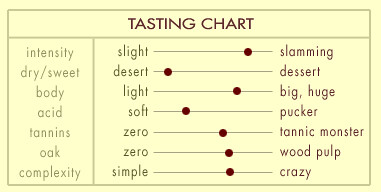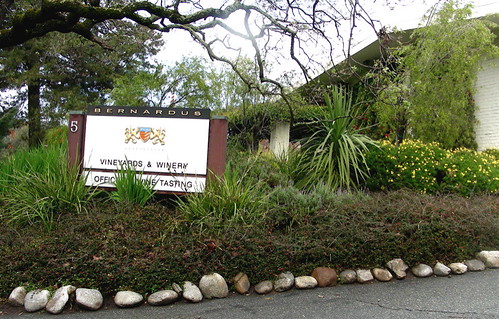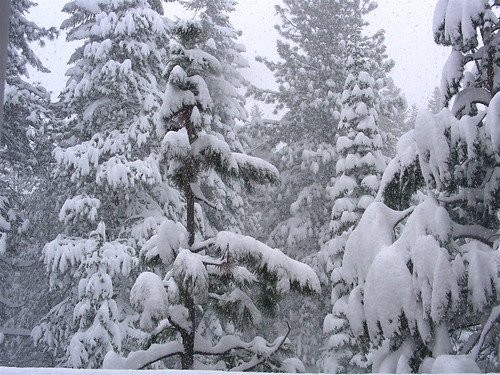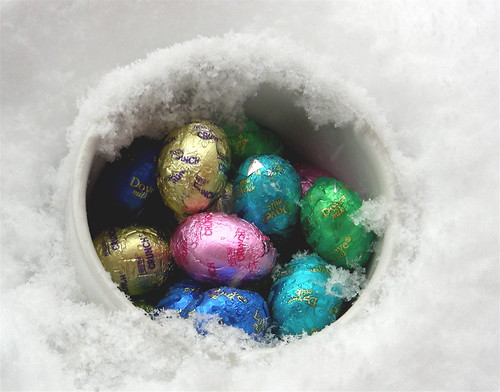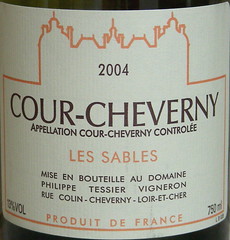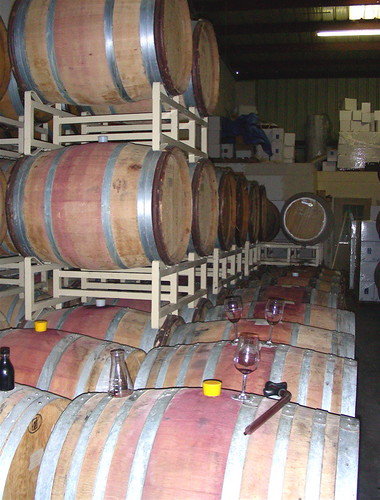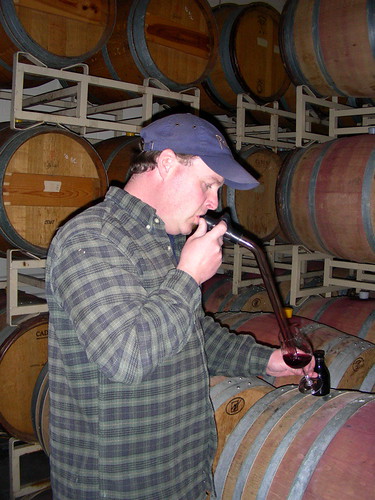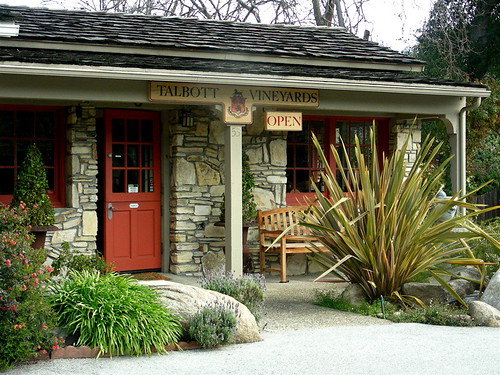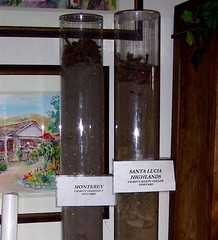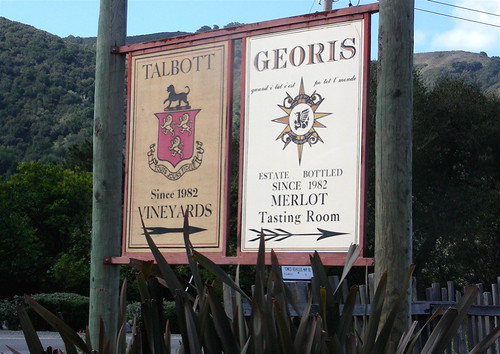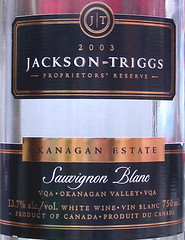 We started with Canada. Our first wine was a Okanagan Valley Sauvignon Blanc from Jackson-Triggs Vintners. The Okanagan Valley is British Columbia's oldest and main grape-producing region. It lies east of the Cascade Mountain at the same latitude as the northern German and French vineyards, but thanks to dry and sunny conditions, it is not considered viticulturally a cool climate region. The Jackson-Triggs Okanagan Estate vineyards are situated in the south Okanagan Valley on moderately sloping terraces above Osoyoos Lake. The lake has a beneficial cooling effect that tempers daytime high temperatures during summer.
We started with Canada. Our first wine was a Okanagan Valley Sauvignon Blanc from Jackson-Triggs Vintners. The Okanagan Valley is British Columbia's oldest and main grape-producing region. It lies east of the Cascade Mountain at the same latitude as the northern German and French vineyards, but thanks to dry and sunny conditions, it is not considered viticulturally a cool climate region. The Jackson-Triggs Okanagan Estate vineyards are situated in the south Okanagan Valley on moderately sloping terraces above Osoyoos Lake. The lake has a beneficial cooling effect that tempers daytime high temperatures during summer. The 2003 Jackson-Triggs Proprietors' Reserve Sauvignon Blanc Okanagan Estate was one of the discovery of the evening. It had a light straw color and an appealing nose of citrus and lemon blossom. On the palate it was dry and crisp with a refreshing mouthfeel and an interesting brown sugar finish. This wine ended up being everybody's favorite.
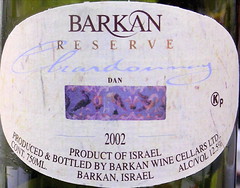 We moved to Israel with our next wine, a Chardonnay from Barkan Wine Cellars. Barkan Wine Cellars is one of the leading wine producers in Israel. With its new ultra-modern winery, it is enjoying an increasing popularity in its country as well as abroad.
We moved to Israel with our next wine, a Chardonnay from Barkan Wine Cellars. Barkan Wine Cellars is one of the leading wine producers in Israel. With its new ultra-modern winery, it is enjoying an increasing popularity in its country as well as abroad. The 2002 Barkan Reserve Chardonnay had a bright straw color and an intensely aromatic nose. The palate was soft with dairy and mineral flavors but I was somewhat disappointed by the short finish. Nevertheless, most of the guests enjoyed the wine for its minerality and aromatic character.
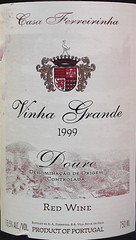 Our first red wine was from the Douro region of Portugal. Douro is maybe the world's most difficult wine region. Vineyards are planted on harsh and rugged mountains that rise up from the Douro River. There is almost no soil on these mountains and vines grow on hard shist and slate stones that retain little water and provide few nutrients. Temperature variations are often extreme. Protected from the humid Atlantic winds by four mountain ranges, the Douro enjoys hot, dry summers and very cold winters. Since the 18th century, the main product of the region is Port, but recently the quintas have been producing an increasing amount of high quality table wine.
Our first red wine was from the Douro region of Portugal. Douro is maybe the world's most difficult wine region. Vineyards are planted on harsh and rugged mountains that rise up from the Douro River. There is almost no soil on these mountains and vines grow on hard shist and slate stones that retain little water and provide few nutrients. Temperature variations are often extreme. Protected from the humid Atlantic winds by four mountain ranges, the Douro enjoys hot, dry summers and very cold winters. Since the 18th century, the main product of the region is Port, but recently the quintas have been producing an increasing amount of high quality table wine. The 1999 Casa Ferreirinha Vinha Grande Douro is a blend of the typical varietals that are used in Port. It had a dark color with black fruits and cocoa powder on the nose. On the palate, it was medium bodied with fine grain tannins and a well-balanced acidity on the finish. Many guests were not convinced by the wine although I personally liked it.
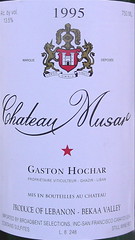 With our second red, the iconic Chateau Musar, we moved to Lebanon. Founded in 1930 by Gaston Hochar, Chateau Musar is located in an 18th Century castle in Ghazir, just fifteen miles north of Beirut. The vineyards lie 30 miles east of Ghazir in the Bekaa Valley. Chateau Musar is the winery's premium wine. It is a blend of Cabernet Sauvignon, Cinsaut, Carignan, Grenache and Mourvèdre. Each varietal is fermented separately in concrete vats and aged up to 24 months in French oak barriques. Then the final blend is made and the wine is bottled and stored in the Chateau's cellars until its release after about 5 years.
With our second red, the iconic Chateau Musar, we moved to Lebanon. Founded in 1930 by Gaston Hochar, Chateau Musar is located in an 18th Century castle in Ghazir, just fifteen miles north of Beirut. The vineyards lie 30 miles east of Ghazir in the Bekaa Valley. Chateau Musar is the winery's premium wine. It is a blend of Cabernet Sauvignon, Cinsaut, Carignan, Grenache and Mourvèdre. Each varietal is fermented separately in concrete vats and aged up to 24 months in French oak barriques. Then the final blend is made and the wine is bottled and stored in the Chateau's cellars until its release after about 5 years.The 1995 Chateau Musar had a dark brick color and a gamey nose with notes of Provençal herbs. On the palate, it was medium-bodied and spicy with a long finish. The style of the wine was unusual and old-fashioned and many guests didn't like it.
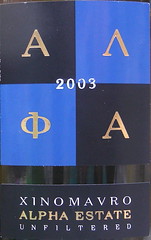 Then we moved to Greece with a Xynomavro from the Alpha Estate. The Alpha Estate is situated in the heart of the Amyndeon region in the far north west of Greece, towards the border of Albania. Xynomavro, which means sour black, is the principal red varietal of the region. It is a grape that produces wines with high level of tannins and acidity.
Then we moved to Greece with a Xynomavro from the Alpha Estate. The Alpha Estate is situated in the heart of the Amyndeon region in the far north west of Greece, towards the border of Albania. Xynomavro, which means sour black, is the principal red varietal of the region. It is a grape that produces wines with high level of tannins and acidity.The 2003 Alpha Estate Xynomavro Unfiltered is a blend of Xynomavro, Syrah and Merlot. It had a deep purple color with aromas of cherry and vanilla on the nose. It was soft on the palate with a light finish.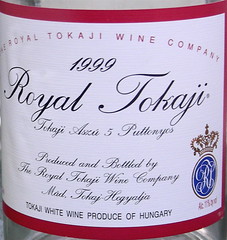 The first of our two dessert wines was a Tokaj Aszú from Hungary. Aszú is the Magyar word for noble rot. The wine was created in the seventeenth century in the Tokaj-Hegyalja region, perhaps by accident: an harvest been delayed because of war.
The first of our two dessert wines was a Tokaj Aszú from Hungary. Aszú is the Magyar word for noble rot. The wine was created in the seventeenth century in the Tokaj-Hegyalja region, perhaps by accident: an harvest been delayed because of war.
The shrivelled, raisiny, botrytis-infected berries are carefully picked by hand and put in puttonyos, traditional wooden vessels holding 20 liters. Then, a certain amount of the rich aszú paste (the more puttonyos, the sweeter and richer the wine) is added to a base wine, made the previous year from unaffected grapes. Furmint is the dominant varietal of the Tokaj region. Its thin skin makes it particularly susceptible to botrytis. Its name comes from the French word froment, or wheat for the wheat-yellow color of the wine it produces.
The 1999 Royal Tokaji Red Label Aszú 5 Puttonyos had a stunning bright apricot color and a vivid fruity nose. On the palate, the wine was fresh and lively, not sirupy at all. The mouthfeel was amazingly rich and light at the same time. I checked the alcohol content: only 11%! The wine was absolutely delicious with dried apricots. 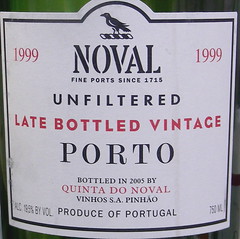 Our last wine took us back to the Douro region. To end this enlightening world tour, Arnaud had selected a Late Bottled Vintage Port from Quinta do Noval. Founded in 1715, Quinta do Noval is famous for its Nacional Vintage Port made from grapes grown on a small 2.5 hectare parcel of ungrafted vines.
Our last wine took us back to the Douro region. To end this enlightening world tour, Arnaud had selected a Late Bottled Vintage Port from Quinta do Noval. Founded in 1715, Quinta do Noval is famous for its Nacional Vintage Port made from grapes grown on a small 2.5 hectare parcel of ungrafted vines.
Late Bottled Vintage (LBV) port is the product of a single year's harvest even in lesser years that are not declared vintage year. LBV port is generally smoother and lighter-bodied than vintage port. It is aged longer in barrel to mature more quickly but doesn't usually age in bottle. It is intended to be ready to drink upon release.
The 1999 Quinta do Noval Late Bottled Vintage Port was thick, sweet, warm and smooth on the palate with rich chocolate flavors, but it seemed very alcoholic after the Tokaj (19.5%). Nevertheless, the wine was excellent with bits of the bittersweet chocolate that Arnaud had brought. And what a wonderful way to end one of the first sunny evening of the season! We had stayed all the time outdoors, tasting the wines in the warm evening sun, comfortably seated on the lawn of our friendly hosts Benoit and Anne.
Technorati tags: wine food & drink
